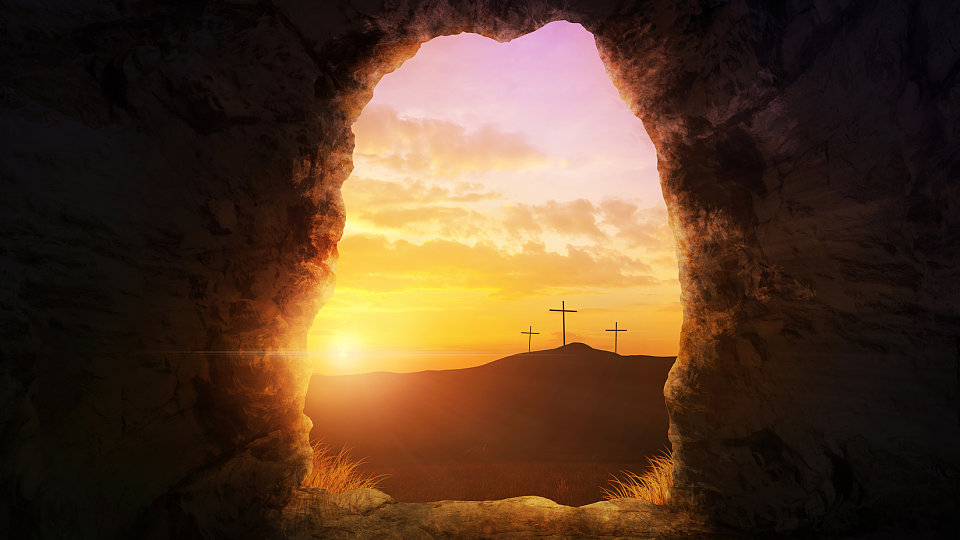The Resurrection of the Body

Today concludes our series of blog posts featuring excerpts from my new book, Creed: What Christians Believe and Why. As we have now entered into the Lenten season, it seems appropriate that we consider the resurrection and the promise of life everlasting. Today, I’m including a portion from Chapter Six, “The Resurrection of the Body.” Click here to read last week’s post, which featured an excerpt from Chapter Five. Christians believe that in Jesus’ death and resurrection, God gave a definitive answer to the existential questions of death and life beyond death. Clearly Jesus was crucified, dead, and buried. His friends grieved and mourned his death. But those same friends claimed that on Sunday morning, after his death on Friday, Jesus stepped out of the tomb. These men and women claimed that they had seen him, eaten with him, touched him, and been taught by him for forty days after his death. The tomb in which he had been buried was empty; people could go and see it. Jesus’ disciples, who, fearing for their lives, had gone into hiding after his death, boldly stepped into the streets to proclaim that he had risen. In the years following, people such as Paul, who had initially rejected Christianity and had even persecuted Christians, claimed to have had encounters, visions, and profound experiences of the risen Christ. Once again, in the late 50s, Paul wrote of Jesus that “he appeared to more than five hundred brothers and sisters at once—most of them are still alive to this day” (1 Corinthians 15:6). With this confidence, Paul could affirm that for him there was no question that we survive death, and he could write, quoting Isaiah 25:8, “Death has been swallowed up by a victory” (1 Corinthians 15:54). Later Paul wrote, “We know that if the earthly tent we live in is destroyed, we have a building from God, an eternal house in heaven, not built by human hands” (2 Corinthians 5:1 NIV). It’s what Jesus meant when he said, “I am the resurrection and the life. Whoever believes in me will live, even though they die. Everyone who lives and believes in me will never die” (John 11:25-26). We believe in life beyond death because Jesus rose from the dead, the disciples bore witness to it, and those who came later had profound experiences with the risen Christ. Jesus’ death and resurrection were, in part, God’s way of speaking to the deepest and most fundamental human crisis: death. I love that phrase in Scripture, included in the Creed: “On the third day he rose again.” As important as Jesus’ death is for Christians, it was his resurrection that demonstrated his triumph over evil, hate, sin, and death. As Jesus said in John, “Because I live, you will live too” (John 14:19). Once again, the existentialist theologian Paul Tillich offered an important word when he wrote, “The face of every man shows the trace of the presence of death in his life, of his fear of death, of his courage toward death, and of his resignation to death. This frightful presence of death subjects man to bondage and servitude all his life.”The resurrection of Jesus from the dead is God’s answer to the “frightful presence of death,” and in one great act on Easter morning Christ liberated believers from death’s “bondage and servitude.” That first Easter, the disciples remained in hiding. They had not yet seen Jesus. They did not expect his resurrection from the grave. When the women came announcing that Jesus had been raised, the disciples thought the women were out of their minds. Then suddenly he appeared among them, saying, “Peace be with you” (John 20:21). In this simple statement Jesus was expressing, in part, what his resurrection and the promise of eternal life mean to us. By conquering death, Jesus addressed our fear and uncertainty and offered his first disciples, and us, a peace that sustains us even in the face of great tragedy and pain. I’m reminded of Thomas Dorsey, one of the greats of African American gospel music. Just days after losing his first wife, Nettie, and their son during childbirth, Dorsey wrote the beloved hymn “Precious Lord, Take My Hand.” Through the storm, through the night, lead me on to the light Take my hand, precious Lord, lead me home. It was Dorsey’s faith that Christ lives, that he walks with us, that there is a resurrection of the body and a life everlasting, that made it possible for him to write those words just days after laying his wife and infant son to rest. This is just a brief excerpt from Chapter Six of my new book, Creed: What Christians Believe and Why. In the rest of the chapter I consider the many aspects and implications of Christ’s resurrection, his promise that we will be raised, and what heaven is like. If you would like to know more about the book or the children, youth or adult small group study resources based upon it, click here; or click here to view the promo videos (scroll to the bottom of the page and click on the "Videos" tab).